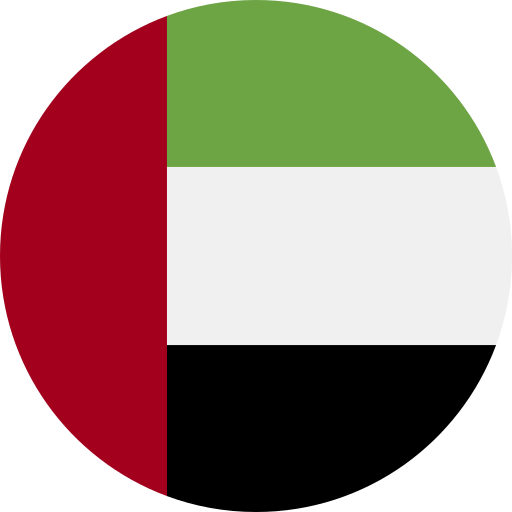Key Takeaways
- Understanding Dialects: Levantine and Gulf Arabic have unique characteristics that impact storytelling and audience engagement in various media forms.
- Cultural Influences: Each dialect is shaped by its cultural heritage, with Levantine Arabic reflecting emotional expression and Gulf Arabic emphasizing clarity and professionalism.
- Media Representation: Levantine Arabic excels in entertainment sectors like music and dramas, while Gulf Arabic is favored in news broadcasting and corporate communications.
- Voice Talent Selection: Choosing voiceover talent familiar with the appropriate dialect enhances authenticity, ensuring content resonates with specific Arab-speaking audiences.
- Current Trends: Social media usage varies between the two dialects; Levantine dominates platforms appealing to younger audiences, whereas Gulf Arabic is preferred for professional communications.
Have you ever wondered how Levantine and Gulf Arabic shape the media landscape? These two dialects not only reflect different cultures but also influence how stories are told across the Arab world. As regional audiences tune in to news, entertainment, and social media, understanding these dialects becomes crucial for effective communication.
In a world where content is king, knowing the nuances between Levantine and Gulf Arabic can help businesses and creators connect with their audience on a deeper level. Whether you’re a marketer aiming to reach diverse demographics or a content creator looking to resonate with viewers, grasping these differences can unlock new opportunities. Let’s dive into how these dialects play out in various media forms and what it means for you.
Overview of Levantine and Gulf Arabic
Levantine and Gulf Arabic represent two prominent dialects within the Arab world, each with unique characteristics that shape their usage in media.
Levantine Arabic, spoken in countries like Lebanon, Syria, Jordan, and Palestine, boasts a rich cultural heritage. Its variations offer a vibrant palette for storytelling through music, television dramas, and films. This dialect often incorporates influences from Turkish and French due to historical interactions. Such diversity makes it appealing for voiceover projects targeting audiences who appreciate nuanced expression.
Gulf Arabic spans several nations including Saudi Arabia, UAE, Qatar, Kuwait, and Bahrain. Known for its distinct sounds and vocabulary influenced by Bedouin culture, this dialect thrives in news broadcasting and corporate communications. The clarity of Gulf Arabic enhances comprehension across diverse demographics.
Understanding these differences can inform your choice when selecting voice talent for projects aimed at specific audiences. For instance, choosing a voice artist familiar with Levantine nuances may resonate better with a Lebanese audience than one using Gulf expressions.
Both dialects are essential for effective communication in media contexts that require authenticity. Recognizing the appropriate context ensures content connects meaningfully with viewers or listeners across different regions of the Arab world.
Historical Context
Understanding the historical context of Levantine and Gulf Arabic enriches your perspective on their roles in media today. Each dialect has evolved through unique cultural influences, shaping how they are perceived and utilized.
Development of Levantine Arabic
Levantine Arabic developed significantly through interactions among diverse cultures. Countries such as Lebanon, Syria, Jordan, and Palestine have influenced this dialect with elements from Turkish and French due to historical trade routes and colonialism. This blend created a rich linguistic tapestry that reflects local customs and traditions. In media, Levantine Arabic often shines in music playlists, television dramas, and films where emotional expression is vital. The adaptability of this dialect makes it appealing for voice talents aiming to connect deeply with audiences across different platforms.
Development of Gulf Arabic
Gulf Arabic’s development also tells a compelling story rooted in Bedouin culture. Spoken prominently in Saudi Arabia, UAE, Qatar, Kuwait, and Bahrain, this dialect carries distinct sounds and vocabulary that resonate with its heritage. Historically linked to nomadic tribes’ lifestyles, it emphasizes storytelling traditions that are clear in news broadcasting and corporate communications today. For voice actors working within these genres, understanding Gulf Arabic’s nuances offers crucial insights into delivering authentic performances that engage listeners effectively.
By grasping the historical contexts of both dialects, you can appreciate how they’ve shaped modern media landscapes—essential knowledge for anyone involved in content creation or communication strategies targeting Arab-speaking audiences.
Media Representation
Understanding the representation of Levantine and Gulf Arabic in media offers valuable insights for anyone working in content creation. Each dialect brings unique qualities to storytelling, influencing how audiences connect with narratives.
Levantine Arabic in Media
Levantine Arabic shines in various media forms such as music, television dramas, and films. This dialect’s rich cultural heritage enhances emotional expression, making it a favorite among content creators aiming to resonate with viewers. You’ll often hear Levantine artists throughout popular shows or songs, showcasing its widespread appeal.
Voice talent proficient in Levantine can capture nuances that reflect the local culture, adding depth to projects. For instance, when selecting voice actors for animated characters or commercials targeted at audiences from Lebanon or Syria, considering their familiarity with this dialect is essential. Their ability to convey authenticity can significantly impact audience engagement.
Gulf Arabic in Media
Gulf Arabic plays a crucial role in news broadcasting and corporate communications due to its clear pronunciation and distinct vocabulary rooted in Bedouin culture. Voiceover talent skilled in Gulf Arabic excels at delivering information succinctly while maintaining professionalism—a must for effective news reporting.
When you’re looking for voiceover artists who specialize in this dialect, consider their background and experience within the region. A voice actor familiar with local idioms can elevate your project by providing authenticity that resonates with Gulf audiences. It’s not just about language; it’s about conveying messages that align closely with cultural sentiments.
Both Levantine and Gulf Arabic offer unique advantages depending on your target demographic. Choosing the right voice over talent based on these distinctions ensures your message connects effectively across diverse Arab-speaking communities.
Cultural Influence
Cultural influences shape both Levantine and Gulf Arabic, reflecting the rich backgrounds of their speakers. Understanding these cultural nuances is essential for anyone looking to connect meaningfully with audiences through media.
Language and Identity
Language serves as a powerful identifier for communities. Levantine Arabic, with its diverse roots in Lebanese, Syrian, Jordanian, and Palestinian cultures, embodies emotional expression that resonates deeply in music and television dramas. It’s not just about words; it’s about conveying feelings and stories that reflect local experiences. On the other hand, Gulf Arabic carries the essence of Bedouin heritage. Its distinct sounds create a sense of pride among speakers while ensuring clarity in communication. This connection to identity highlights why choosing the right voice talent who understands these cultural subtleties can enhance any project aimed at Arab-speaking audiences.
Media Production Differences
Media production varies significantly between Levantine and Gulf Arabic due to their unique characteristics. In creative formats like films or series, Levantine dialects shine with their lyrical quality, making them perfect for storytelling that requires emotional depth. Hiring voice actors skilled in this dialect brings authenticity that captures audience hearts. Conversely, when it comes to news broadcasting or corporate communications, Gulf Arabic stands out for its precision and professionalism. Clear pronunciation matters here; thus selecting voice over talent familiar with this dialect ensures information is conveyed effectively without losing credibility.
Understanding these differences isn’t just academic—it’s vital for successful media projects targeting diverse Arab-speaking populations. The right choice of voiceover talent based on dialectal knowledge can elevate your content’s impact immensely.
Current Trends
The media landscape is constantly evolving, especially with the rise of digital platforms. Understanding how Levantine and Gulf Arabic are currently influencing this space is crucial for effective communication.
Social Media Usage
Social media thrives on relatability and engagement, making language choice vital. Levantine Arabic dominates platforms like Instagram and TikTok, where emotional expression resonates with younger audiences. Its rich cultural references attract followers who appreciate authenticity in content. On the other hand, Gulf Arabic finds its place in professional environments such as LinkedIn or Twitter, where clarity and precision matter most. Businesses often use Gulf Arabic to establish credibility through concise messaging tailored to corporate communications.
Voiceover talent skilled in either dialect can enhance social media campaigns by ensuring that messages resonate with the target audience effectively. Selecting a voice artist who understands these nuances strengthens connections and improves engagement rates.
Television and Film Industries
Television dramas and films represent powerful storytelling mediums that reflect cultural identities. Levantine Arabic shines in productions that emphasize emotional depth, often seen in popular series from Lebanon or Syria. Viewers connect deeply with characters speaking their native dialects, which enhances overall enjoyment of the narrative.
Gulf Arabic plays a significant role in news broadcasting and corporate films due to its clear pronunciation and direct style. This clarity ensures that information is conveyed efficiently while maintaining professionalism. Voiceover actors specializing in Gulf Arabic deliver impactful narratives that captivate viewers without losing focus on critical details.
Both dialects bring distinct qualities that enrich television and film projects; understanding when to employ which dialect can elevate your content significantly. Whether you’re producing an engaging drama or a precise corporate video, choosing the right voice over talent makes all the difference in connecting with your audience effectively.
Conclusion
Navigating the media landscape requires an appreciation of the nuances between Levantine and Gulf Arabic. Each dialect offers unique advantages that resonate with specific audiences and contexts. Understanding these differences not only enhances communication but also enriches storytelling.
As you engage with diverse Arab-speaking communities, choosing the appropriate dialect can significantly impact your connection with them. Whether you’re creating content for social media or producing corporate communications, recognizing when to utilize Levantine or Gulf Arabic will elevate your projects’ effectiveness.
By embracing these dialectal distinctions, you’re equipped to foster deeper relationships and create more meaningful content in today’s evolving media environment.
Frequently Asked Questions
What are Levantine and Gulf Arabic?
Levantine Arabic is spoken in Lebanon, Syria, Jordan, and Palestine, known for its rich cultural expressions in music and media. Gulf Arabic is prevalent in Saudi Arabia, UAE, Qatar, Kuwait, and Bahrain and features distinct sounds rooted in Bedouin culture.
How do these dialects influence storytelling?
Each dialect uniquely influences storytelling; Levantine Arabic excels in emotional narratives suitable for dramas and films, while Gulf Arabic’s clarity makes it ideal for news broadcasting and corporate communications.
Why is understanding these dialects important for businesses?
Understanding Levantine and Gulf Arabic allows businesses to connect meaningfully with diverse audiences. Selecting the right voice talent ensures authenticity in messaging across different Arab-speaking communities.
What role does cultural heritage play in these dialects?
Cultural heritage significantly shapes both dialects. Levantine Arabic incorporates influences from various cultures enhancing emotional expression, whereas Gulf Arabic reflects Bedouin traditions emphasizing storytelling clarity.
How has the media landscape evolved with these dialects?
The rise of digital platforms has shifted how these dialects are used; Levantine Arabic thrives on social media for its emotional appeal, while Gulf Arabic dominates professional platforms where clear communication is vital.
When should I choose Levantine or Gulf Arabic for my project?
Choose Levantine Arabic when aiming for emotional depth in creative formats like dramas or music. Opt for Gulf Arabic when clarity is essential for news reporting or corporate content to ensure effective audience engagement.







